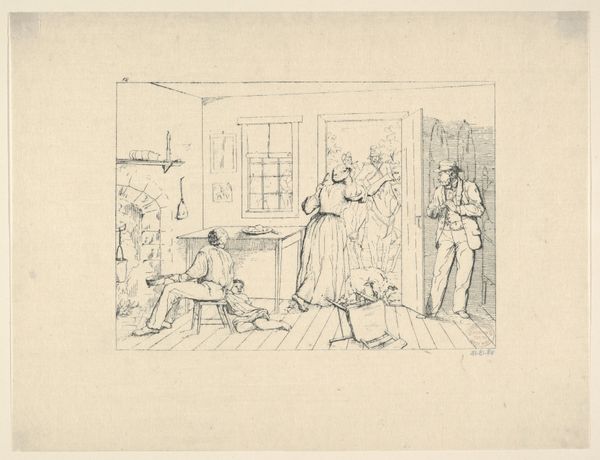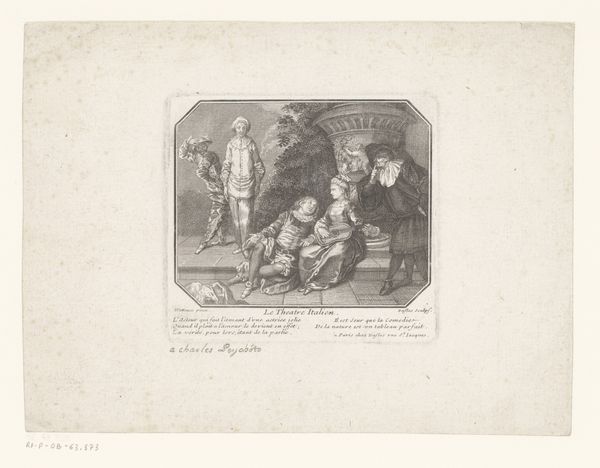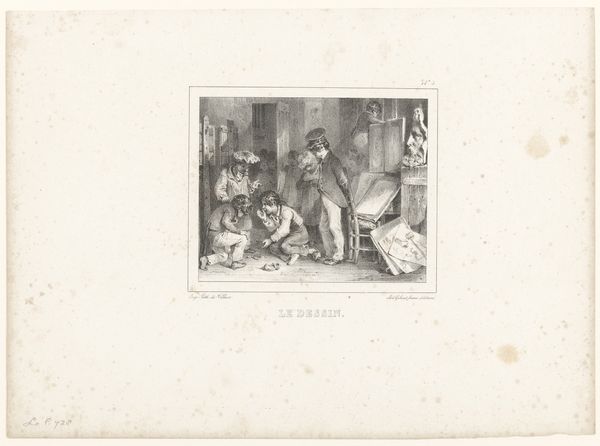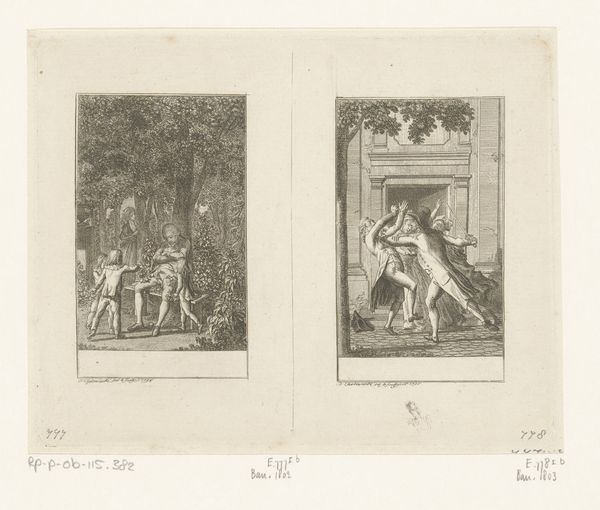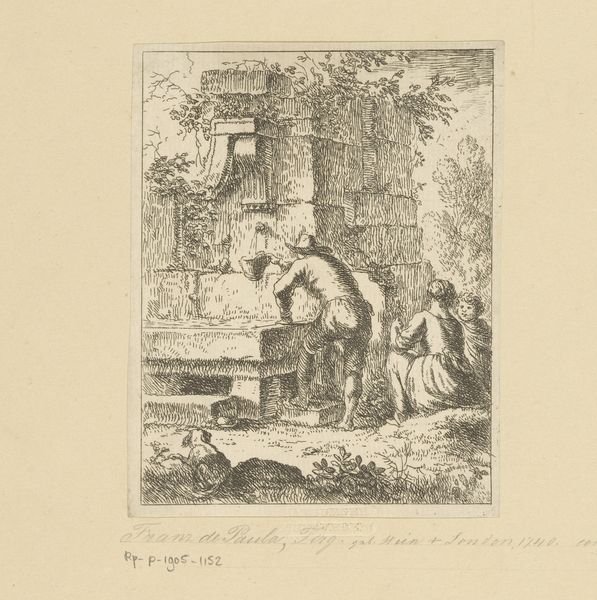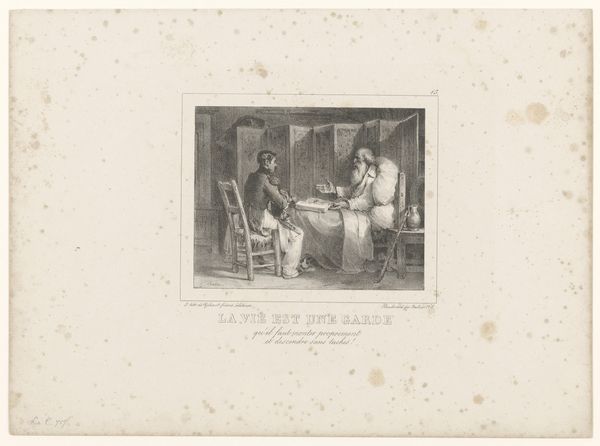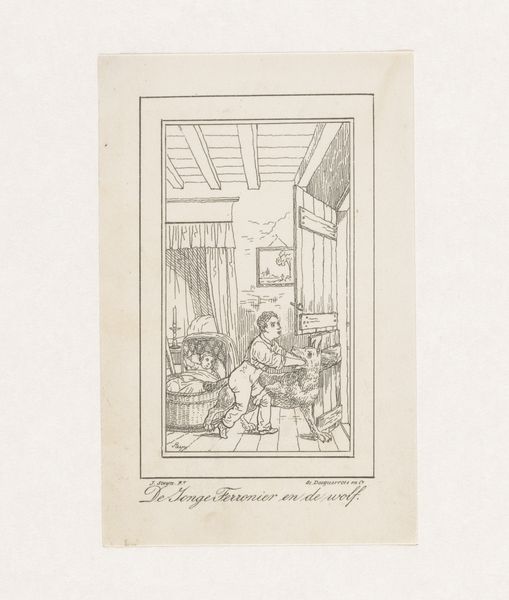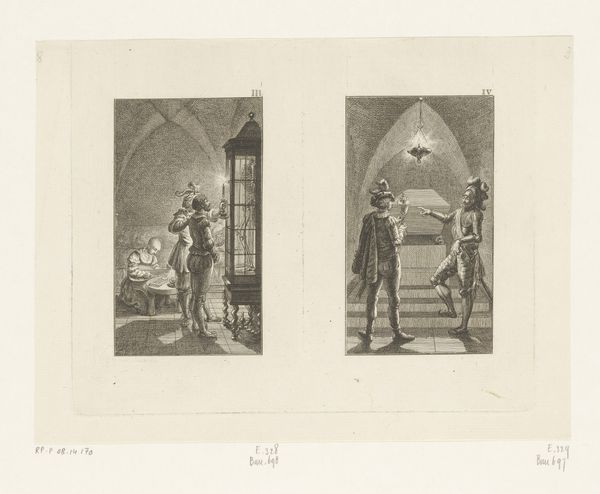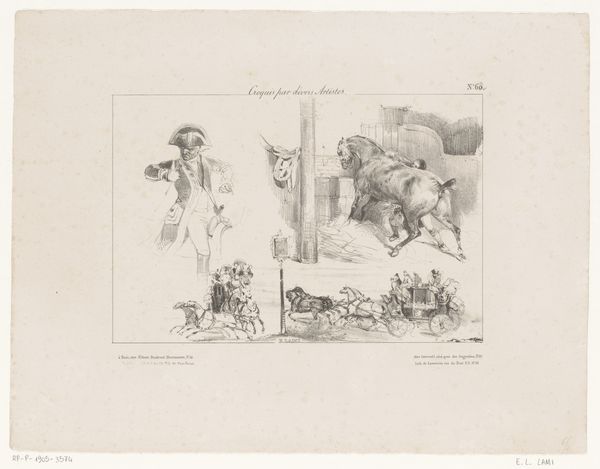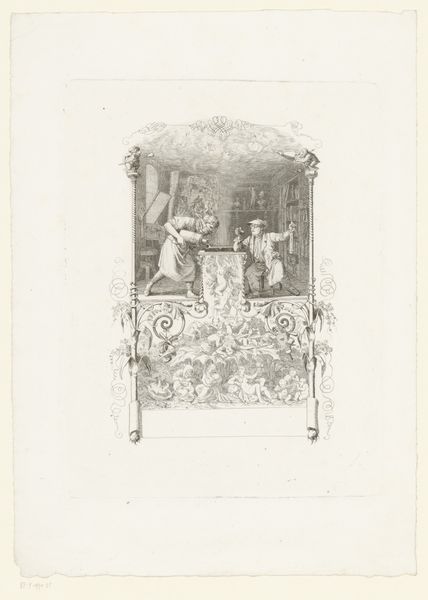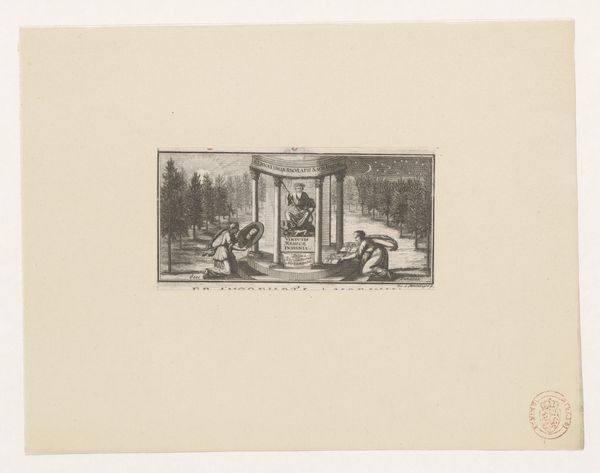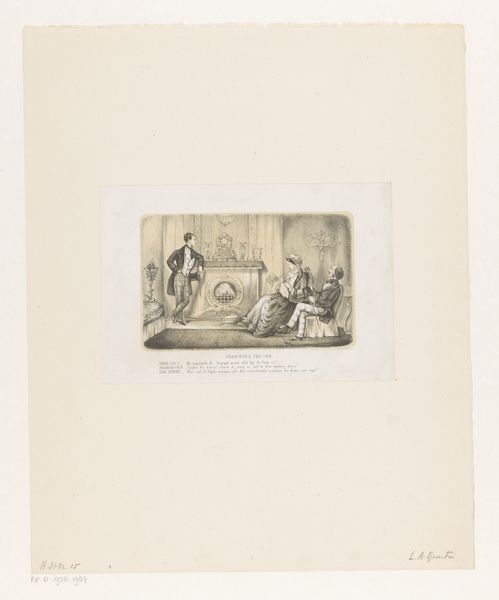
print, engraving
# print
#
old engraving style
#
figuration
#
romanticism
#
line
#
history-painting
#
engraving
Dimensions: height 140 mm, width 218 mm
Copyright: Rijks Museum: Open Domain
Curator: Let’s turn our attention now to a historical engraving by Charles Onghena, created sometime between 1833 and 1845. It’s entitled "Executie te Gent: ophangen in een schoorsteen in 1497", depicting an execution in Ghent. What strikes you initially about this scene? Editor: The overwhelming sense of interiority despite the grim subject matter. Look at the detailed patterning on the walls, the ordinary furnishings. It suggests these horrors are playing out not in a distant dungeon, but within a space someone likely called home. The composition draws attention to these everyday objects of living even while lives are ending in what seems to be the hearth, of all places. Curator: Precisely. The image works as a kind of visual record, solidifying historical narratives. Onghena uses the engraving technique to portray this event of 1497 in a manner aligned with Romantic sensibilities, giving great consideration to linework and the way it emphasizes form and shadow. The very process of producing this work becomes a means to understand historical accounts through material forms and distribution of such prints. Editor: I see how this connects to larger patterns. The suspended men wear specific garments, pointing perhaps to their roles or social status within the Ghent community, while the officials enacting the execution are dressed differently. The placement within a chimney suggests ideas of purification through fire or perhaps obliteration of one's identity within domestic structure as a kind of symbolic reduction. The faces also tell us stories - some are resigned while others reveal intense fear. Curator: And let's not overlook that the setting itself – Ghent – would have held symbolic meaning for viewers. Its socio-political history would’ve imbued the location with a deeper significance. By the way this work's medium—print engraving—enabled its wide distribution, its image becoming part of the public's knowledge of a past, solidified through repeatable production methods. Editor: Ultimately, I am captivated by how familiar domestic symbols like that cozy armchair or intricately wallpapered background clashes with the gruesome execution being carried out, urging us to question comfortable, yet brutal moments throughout history, rendered by very human hands, if one may. Curator: Indeed. Considering its medium and creation context gives even more gravitas to a deeply disturbing event. Editor: I'll never look at a chimney in the same way again.
Comments
No comments
Be the first to comment and join the conversation on the ultimate creative platform.


